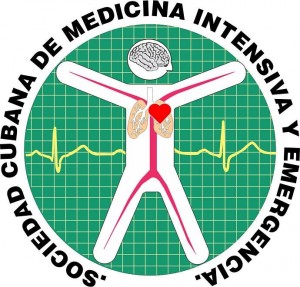Sepsis y líquidos, ¿lo estamos haciendo bien?
Palabras clave:
sepsis, líquidos, reanimación / sepsis, fluids, resuscitationResumen
La estrategia óptima de cómo se debe realizar la reanimación con administración de líquidos en pacientes con sepsis y shock séptico es controvertida. La Surviving Sepsis Campaign recomienda que, en la reanimación de la hipoperfusión inducida por la sepsis, se administre al menos 30 mL/kg de cristaloides IV dentro de las tres primeras horas (sin excepciones). Nuevos estudios han demostrado que un tratamiento inicial sin un control de los líquidos perfundidos se asocia con un aumento en la mortalidad. Las guías de la Surviving Sepsis Campaign fueron actualizadas en 2018. Indican que el inicio de antibióticos y un bolo de líquidos de 30 mL/kg (dentro de los primeros sesenta minutos desde la entrada en el servicio de urgencias) aumentan la supervivencia. Estas recomendaciones son arbitrarias y peligrosas. Probablemente puedan causar decisiones apresuradas, administración inadecuada de líquidos y el uso indiscriminado de antibióticos de amplio espectro. Esta investigación tuvo como objetivo describir el tratamiento brindado a dos pacientes, diagnosticados con sepsis, y su evolución.
Descargas
Citas
1. Levy MM, Evans LE, Rhodes A. The surviving sepsis campaign bundle: 2018 update. Intensive Care Medicine. 2018 Jun 1;44(6):925-8.
2. Pepper DJ, Jaswal D, Sun J, Welsch J, Natanson C, Eichacker PQ. Evidence underpinning the Centers for Medicare & Medicaid Services’ Severe Sepsis and Septic Shock Management Bundle (SEP-1): A systematic review. Annals of Internal Medicine. 2018;168:558-68.
3. Singer M, Deutschman CS, Seymour CW, Shankar-Hari M, Annane D, Bauer, et al. The third international consensus definitions for sepsis and septic shock (sepsis-3). Jama. 2016 Feb 23;315(8):801-10.
4. Rivers E, Nguyen B, Havstad S, Ressler J, Muzzin A, Knoblich B, et al. Early goal-directed therapy in the treatment of severe sepsis and septic shock. New England Journal of Medicine. 2001 Nov 8;345(19):1368-77.
5. Malbrain ML, Marik PE, Witters I, Cordemans C, Kirkpatrick AW, Roberts DJ, et al. Fluid overload, de-resuscitation, and outcomes in critically ill or injured patients: a systematic review with suggestions for clinical practice. Anaesthesiology Intensive Therapy. 2014;46(5):361-80.
6. Kelm DJ, Perrin JT, Cartin-Ceba R, Gajic O, Schenck L, Kennedy CC. Fluid overload in patients with severe sepsis and septic shock treated with early-goal directed therapy is associated with increased acute need for fluid-related medical interventions and hospital death. Shock (Augusta, Ga.). 2015 Jan;43(1):68.
7. Acheampong A, Vincent JL. A positive fluid balance is an independent prognostic factor in patients with sepsis. Critical Care. 2015 Jun 15;19(1):251.
8. Marik PE, Linde-Zwirble WT, Bittner EA, Sahatjian J, Hansell D. Fluid administration in severe sepsis and septic shock, patterns and outcomes: an analysis of a large national database. Intensive Care Medicine. 2017 May 1;43(5):625-32.
9. Maitland K, Kiguli S, Opoka RO, Engoru C, Olupot-Olupot P, Akech SO, et al. Mortality after fluid bolus in African children with severe infection. New England Journal of Medicine. 2011 Jun 30;364(26):2483-95.
10. Cecconi M, Aya HD, Geisen M, Ebm C, Fletcher N, Grounds RM, et al. Changes in the mean systemic filling pressure during a fluid challenge in postsurgical intensive care patients. Intensive Care Medicine. 2013 Jul 1;39(7):1299-305.
11. Patterson SW, Starling EH. On the mechanical factors which determine the output of the ventricles. The Journal of Physiology. 1914 Sep 8;48(5):357-79.
12. Andrews B, Semler MW, Muchemwa L, Kelly P, Lakhi S, Heimburger DC, et al. Effect of an early resuscitation protocol on in-hospital mortality among adults with sepsis and hypotension: a randomized clinical trial. Jama. 2017 Oct 3;318(13):1233-40.
13. Monnet X, Teboul JL. Passive leg raising: five rules, not a drop of fluid! Critical Care. 2015 Jan 14;19(1):18.
14. Monnet X, Marik P, Teboul JL. Passive leg raising for predicting fluid responsiveness: a systematic review and meta-analysis. Intensive care medicine. 2016 Dec 1;42(12):1935-47.
15. Angus DC, Barnato AE, Bell D, Bellomo R, Chong CR, Coats TJ, et al. A systematic review and meta-analysis of early goal-directed therapy for septic shock: the ARISE, ProCESS and ProMISe Investigators. Intensive Care Medicine. 2015 Sep 1;41(9):1549-60.
16. Pallin D, Spiegel R. The Surviving Sepsis Campaign: A Rush to Judgment. NEJM Journal Watch [Internet]. 2018 [citado: 30/08/2018]. Disponible en: https://www.jwatch.org/na46999/2018/08/06/surviving-sepsis-campaign-rush-judgment
17. Marik PE. The demise of early goal‐directed therapy for severe sepsis and septic shock. Acta Anaesthesiologica Scandinavica. 2015 May 1;59(5):561-7.






